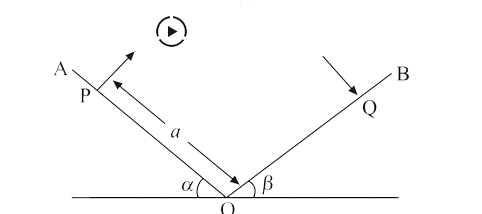A
B
C
D
Text Solution
Verified by Experts
The correct Answer is:
Topper's Solved these Questions
Similar Questions
Explore conceptually related problems
DC PANDEY ENGLISH-MOTION-Medical entrances gallery
- Two inclined planes OA and OB intersect in a horizontal plane having t...
Text Solution
|
- A ball is thrown from the top of a tower with an initial velocity of 1...
Text Solution
|
- The range of a projectile is R when the angle of projection is 40^(@)....
Text Solution
|
- A particle with a velcoity (u) so that its horizontal ange is twice th...
Text Solution
|
- If the angle of projection of a projector with same initial velocity e...
Text Solution
|
- A particle is moving such that its position coordinates (x, y) are (2m...
Text Solution
|
- A cricket ball thrown across a field is a heights h(1) and h(2) from t...
Text Solution
|
- For an object thrown at 45^(@) to the horizontal, the maximum height H...
Text Solution
|
- A body is projected horizontally from the top of a tower with a veloci...
Text Solution
|
- A body is projected with an angle theta.The maximum height reached is ...
Text Solution
|
- The velocity of a projectile at the initial point A is (2 hati +3 hatj...
Text Solution
|
- A projectile is thrown with initial velocity u(0) and angle 30^(@) wit...
Text Solution
|
- A projectile is projected at 10ms^(-1) by making an angle 60^(@) to th...
Text Solution
|
- There are two angles of projection for which the horizontal range is t...
Text Solution
|
- The velocity vector of the motion described by the position vector of ...
Text Solution
|
- Two stones are projected from level ground. Trajectory of two stones a...
Text Solution
|
- The horizontal range and the maximum height of a projectile are equal....
Text Solution
|
- A projectole fired with initial velocity u at some angle theta has a r...
Text Solution
|
- A ball thrown by one player reaches the other in 2 s. The maximum heig...
Text Solution
|
